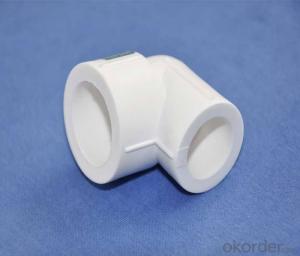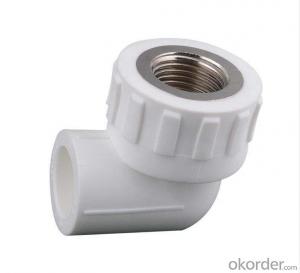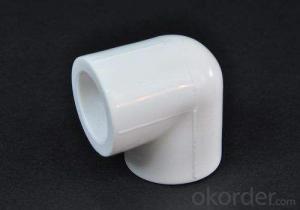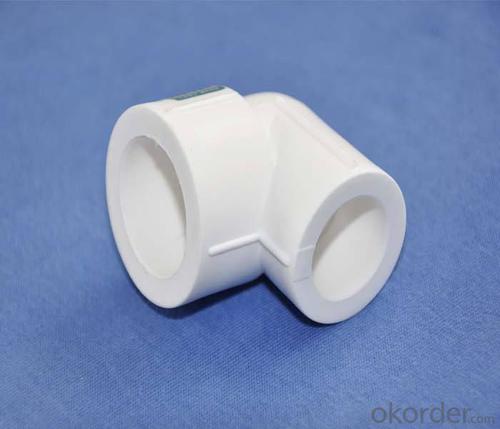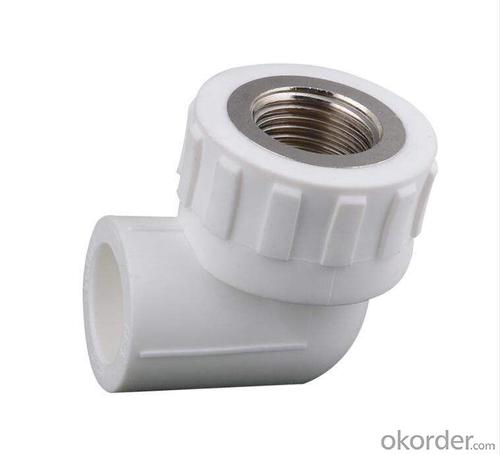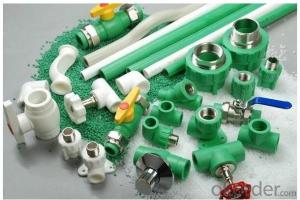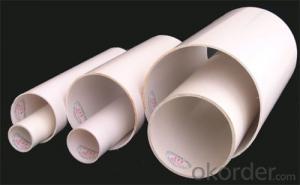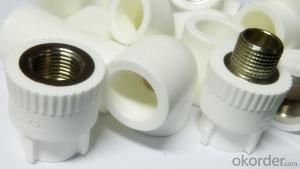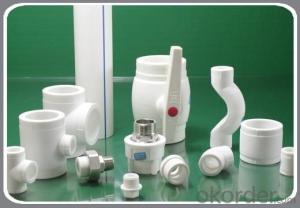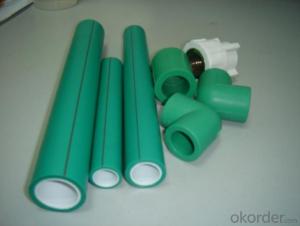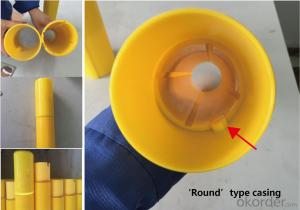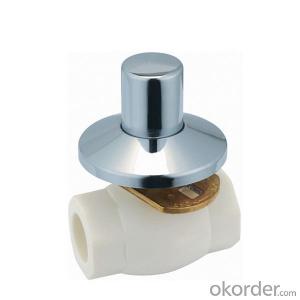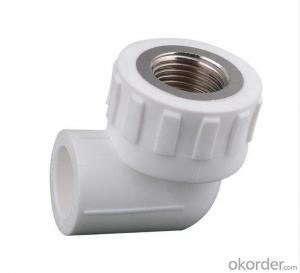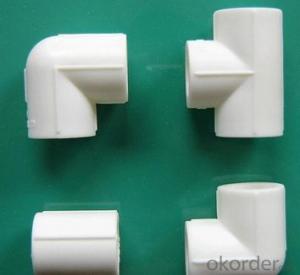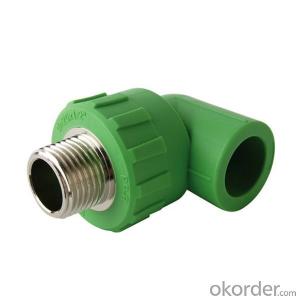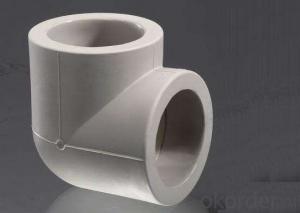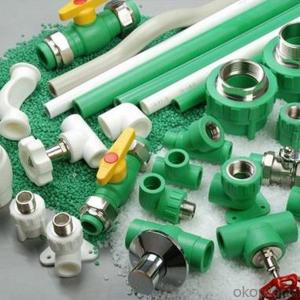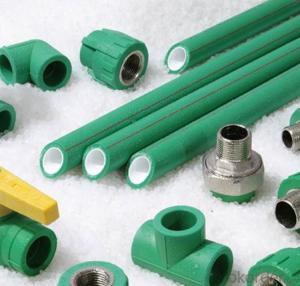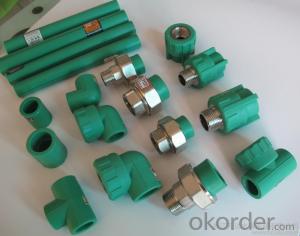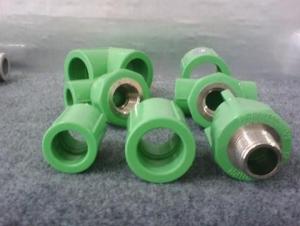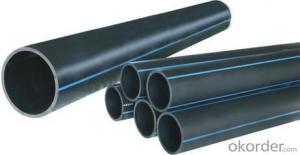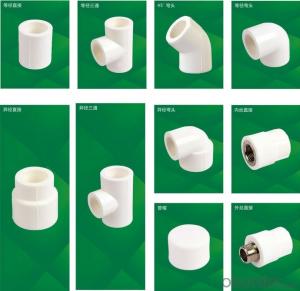Plastic Culvert Pipe Fittings for PPR Elbow in Irrigation Fields
- Loading Port:
- Shanghai
- Payment Terms:
- TT OR LC
- Min Order Qty:
- 1000 pc
- Supply Capability:
- 100000 pc/month
OKorder Service Pledge
OKorder Financial Service
You Might Also Like
Product Overview
PP-R (polypropylene random) tube called type three polypropylene pipe and is also called the PP-R pipe or PPR pipe, with energy saving, environmental protection, high strength, corrosion resistance, with smooth inner wall has the advantages of scale, construction and easy maintenance, long service life, widely used in building water supply and drainage, urban drainage city gas and power cable sheath, and industrial fluid transportation, agricultural irrigation construction, municipal, industrial and agricultural fields. The PP-R pipe is made of random copolymerized polypropylene and is extruded into tubes to be molded into tubes.
Application
1) Cold and hot water systems of residence and commercial buildings
2) Transportation of industrial water supply and chemical materials
3) Pure water pipe system
4) Piping networks for rainwater utilization systems
5) Irrigation agriculture and horticulture systems
6) Transportation system of drinking water production
7) Piping networks for solar plants
8) Other pipes in industry
Feature
1) The professional factory of fittings.
2) The important manufacture of fittings in china.
3) High quality and better price.
4) Convenient One touch fittings provide instant tubing connections.
5) Elliptical release ring help to connect the tube easily by manual, no special tools required.
Product Description
Pressure | Size(mm) | Pressure | Size(mm) |
PN1.25MPA | 20*2.0 |
PN1.6MPA | 20*2.3 |
25*2.3 | 25*2.8 | ||
32*2.9 | 32*3.6 | ||
40*3.7 | 40*4.5 | ||
50*4.6 | 50*5.6 | ||
63*5.8 | 63*7.1 | ||
75*6.8 | 75*8.4 | ||
90*8.2 | 90*10.1 | ||
110*10.0 | 110*12.3 |
Product Show
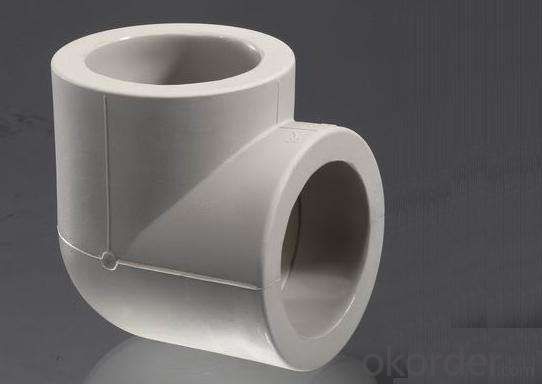
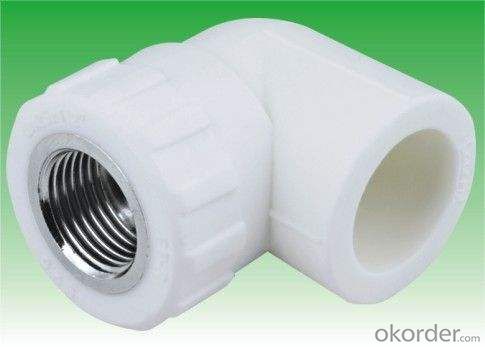
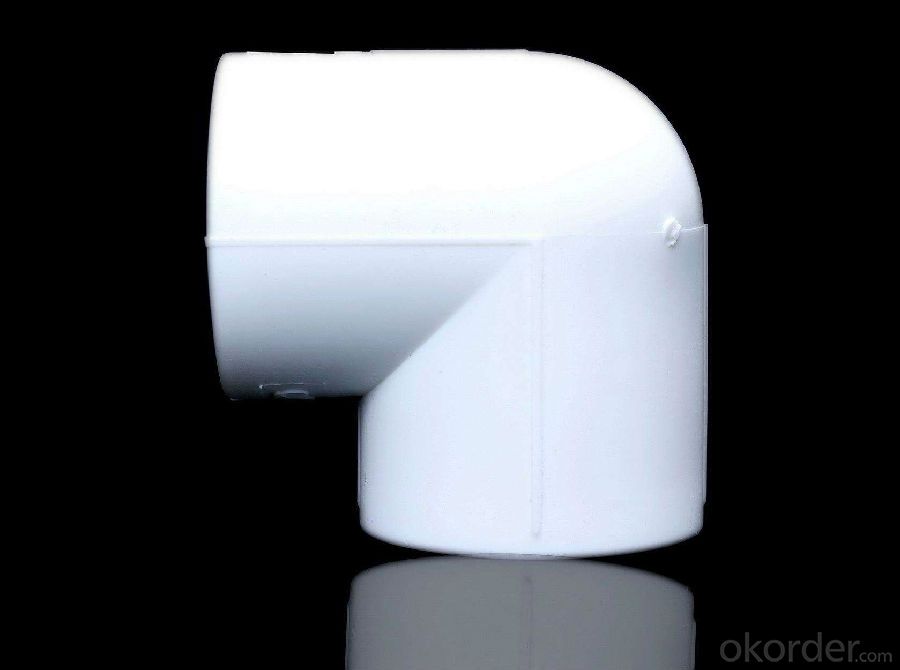
FAQ
1. Can you find a translator for me?
You can tell us which language you speak, we will find the translator for you, and will be together work.
2. If we want to develop some new item, but maybe we just have some ideas, how can you do?
We can make new mold base on your idea, generally, if your quantity is more enough, we can refund the mold cost to you.
3. How Long Is Delivery?
Delivery time will be 30-45 days according to order quantity.
4.What Is Our Normal Payments Terms?
Our normal payment terms: T/T, L/C or western union.
- Q: Are plastic pipe fittings compatible with other plumbing materials?
- Yes, plastic pipe fittings are generally compatible with other plumbing materials. Plastic fittings can be used with various types of pipes such as PVC, CPVC, PEX, and ABS. However, it is important to ensure that the specific plastic fitting is designed and rated for use with the particular pipe material to ensure a proper and secure connection.
- Q: Can plastic pipe fittings be used in fire-retardant systems?
- No, plastic pipe fittings cannot be used in fire-retardant systems as they are not capable of withstanding high temperatures and may melt or release toxic fumes in case of fire.
- Q: How do plastic pipe fittings handle abrasive fluids?
- Plastic pipe fittings are generally not recommended for handling abrasive fluids as they may wear down or get damaged due to the abrasive particles present in the fluid. It is advisable to use materials like metal or other corrosion-resistant materials for such applications.
- Q: Can plastic pipe fittings be used for condensate drainage systems?
- Yes, plastic pipe fittings can be used for condensate drainage systems. Plastic fittings are commonly used for condensate drainage due to their durability, resistance to corrosion, and ease of installation. They are also cost-effective and offer good performance in managing condensate water from HVAC systems or other equipment.
- Q: Can plastic pipe fittings be used for geothermal systems?
- Yes, plastic pipe fittings can be used for geothermal systems. Plastic pipe fittings, such as those made from high-density polyethylene (HDPE) or cross-linked polyethylene (PEX), are commonly used in geothermal systems due to their durability, corrosion resistance, and flexibility. These fittings are able to withstand the high temperatures and pressures involved in geothermal systems, making them a suitable choice for this application.
- Q: Are plastic pipe fittings suitable for hydroponic systems?
- Yes, plastic pipe fittings are suitable for hydroponic systems. They are commonly used due to their durability, resistance to corrosion, and affordability. Additionally, plastic pipe fittings provide easy installation and flexibility in designing the hydroponic system.
- Q: Can plastic pipe fittings be used for industrial applications?
- Yes, plastic pipe fittings can be used for industrial applications. Plastic pipe fittings are durable, lightweight, and resistant to corrosion, making them suitable for various industrial settings. They are commonly used in industries such as chemical processing, water treatment, and HVAC systems. Additionally, plastic pipe fittings can offer cost savings compared to traditional metal fittings, making them a popular choice in many industrial applications.
- Q: Are plastic pipe fittings resistant to fire?
- No, plastic pipe fittings are not generally resistant to fire.
- Q: Are plastic pipe fittings resistant to pressure surges?
- Yes, plastic pipe fittings are generally resistant to pressure surges. Plastic materials such as PVC and CPVC are designed to withstand sudden increases in pressure without deformation or failure, making them suitable for handling pressure surges in plumbing and industrial applications. However, it is important to ensure that the fittings are properly installed and meet the required standards to ensure their maximum resistance to pressure surges.
- Q: How do you connect plastic pipe fittings to PVC pipes?
- To connect plastic pipe fittings to PVC pipes, you can use PVC cement or adhesive specifically designed for joining PVC materials. Simply apply the cement to the inside of the fitting and the outside of the PVC pipe, then push them together firmly. Allow sufficient time for the cement to dry and create a strong, permanent bond between the plastic pipe fittings and PVC pipes.
Send your message to us
Plastic Culvert Pipe Fittings for PPR Elbow in Irrigation Fields
- Loading Port:
- Shanghai
- Payment Terms:
- TT OR LC
- Min Order Qty:
- 1000 pc
- Supply Capability:
- 100000 pc/month
OKorder Service Pledge
OKorder Financial Service
Similar products
Hot products
Hot Searches
Related keywords
